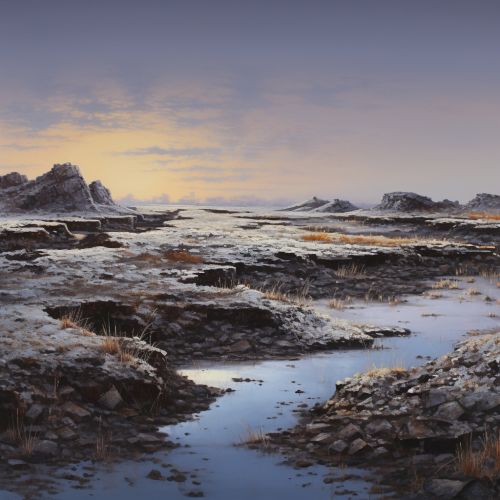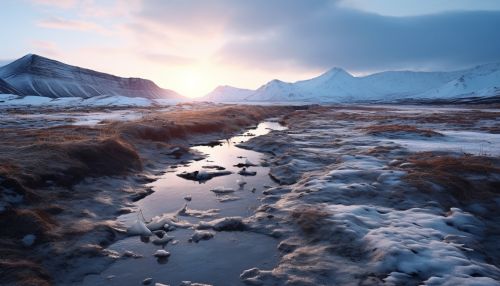Permafrost
Definition and Characteristics
Permafrost is a type of ground that remains at or below the freezing point of water for two or more years. It consists of rock, soil, sediments, and varying amounts of ice that bind the elements together. The thickness of permafrost can range from less than a meter to more than 1500 meters.
Permafrost is classified into two types: continuous and discontinuous. In continuous permafrost areas, the ground is frozen all year round, while in discontinuous permafrost regions, the ground thaws during the summer.


Formation and Distribution
Permafrost forms in regions where the temperature remains below freezing for extended periods. It is most commonly found in the polar regions, but can also occur in high mountain areas or beneath cold bodies of water. The largest expanses of permafrost are found in Siberia, Canada, Greenland, and Alaska.
Impact on Ecosystems
Permafrost plays a significant role in shaping the ecosystems of the regions where it is found. It affects the types of vegetation that can grow, influences the behavior of wildlife, and impacts the hydrology of the area.
The presence of permafrost can lead to the formation of unique landforms, such as pingos and thermokarsts. These features can provide habitats for specialized species and contribute to the biodiversity of the region.
Climate Change and Permafrost
Permafrost is highly sensitive to changes in climate. Rising global temperatures are causing permafrost to thaw at an accelerated rate, which can have significant environmental impacts.
When permafrost thaws, it releases stored carbon in the form of greenhouse gases, including carbon dioxide and methane. This release of greenhouse gases can further exacerbate climate change, creating a feedback loop known as the permafrost carbon feedback cycle.
Human Interaction and Infrastructure
Permafrost regions pose unique challenges for human habitation and infrastructure development. Buildings, roads, and other structures can be damaged by the ground's movement as it freezes and thaws.
Special construction techniques, such as the use of pile foundations, are often required to build on permafrost. However, as permafrost thaws due to climate change, existing infrastructure is at increased risk of damage.
